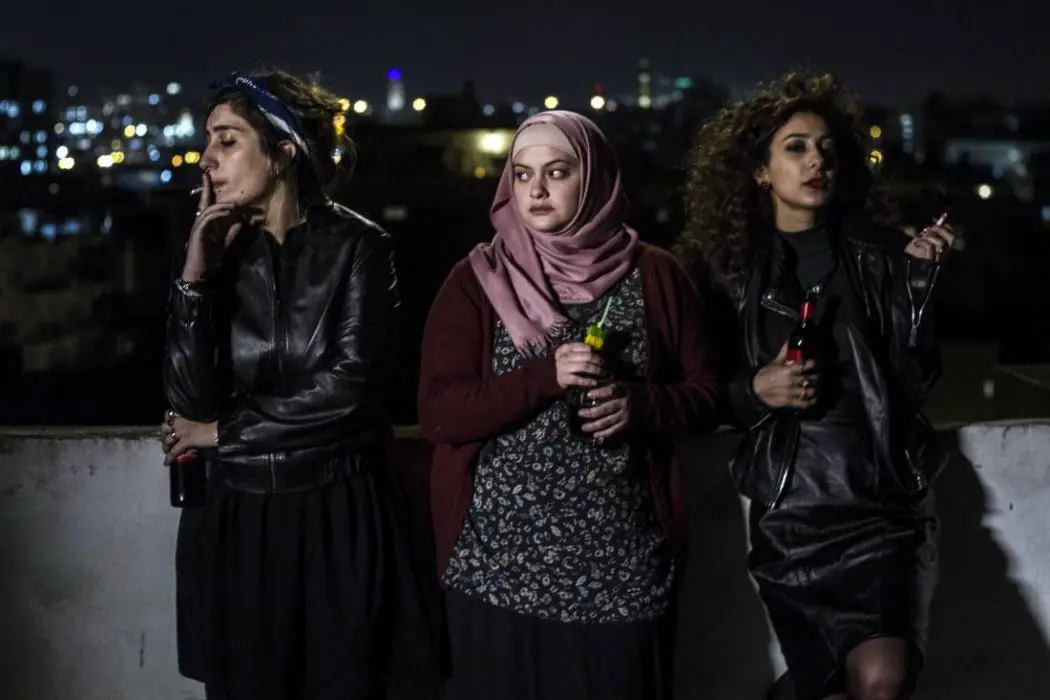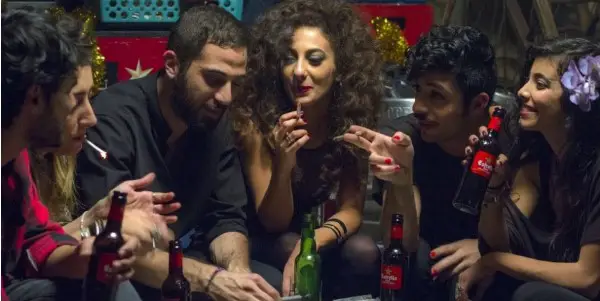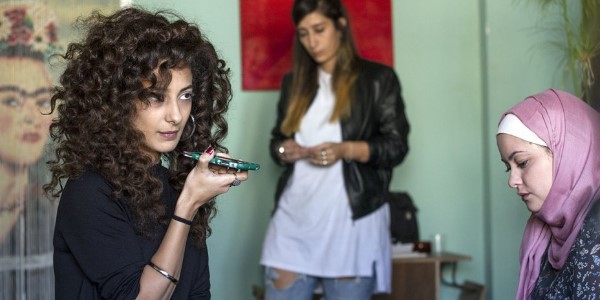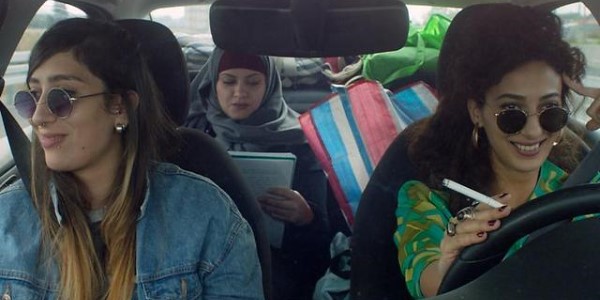IN BETWEEN: Illuminating, Impactful Portrait Of Arab Women

Musanna Ahmed is a freelance film critic writing for Film…
Originally having premiered at the Toronto International Film Festival in 2016, In Between has been making its way around the world over the past year, now finally arriving here in the UK and soon stateside. In between that time, this drama about three Palestinian women living in Israel has earned a slew of award nominations and victories at film festivals around the globe, and its filmmaker Maysaloun Hamoud a fatwa – she’s the first Palestinian to be issued with one since 1948.
The roots of what would cause such a reaction can be immediately identified: the film opens with a scene of an old Arab woman explaining to a woman of a younger generation that women must conform to the expectations of their husbands. It’s followed by a scene of Arab women partying it up – smoking, dancing, consuming Ritalin supplied to them by a homosexual man, and just having a good time in general. These images are accompanied by a hip party song, and the contemporary, radio-friendly sounds are consistent throughout the film’s soundtrack.
Stereotypes versus reality
Not being an Arabic speaker myself and with no subtitles provided for the music, I won’t pretend to know what the lyrics mean but I’m willing to bet that they’re as subversive and thought-provoking as the ones I did understand such as ‘Palestinian Girls’ by M.G. Saad (Saad is responsible for the music of the film and some of the other titles on the mixtape are ‘The Douche and the Beauty’ and ‘Peaceful Demonstration’). Ultimately, the juxtaposition of these two scenes represents a world apart from the elder and the younger generations, the liberal and the conservative values, traditionalism versus modern lifestyles, and the stereotypical view of Arab women compared to the reality.

Throughout the whole of In Between, Hamoud presents cultural taboos then proceeds with letting her three protagonists smash them, smashing any pre-conceived stereotypical notions of Arab women along with them too. There’s the Nazareth-born, chain-smoking, festive attorney Leila (Mouna Hawa) who is unyielding in the presentation of her self-image. She lives with tattooed friend Salma (Sana Jamellieh), who hails from Tarshiha but also loves to party, pursuing a career in DJ’ing, and is a lesbian. Leila and Salma are joined by a new flatmate from the religiously conservative town Umm Al-Fahm, the reserved conservative Muslim and computer science graduate Nour (Shaden Kanboura). This motley crew share a flat together but they’re also united in their fight against cultural stereotypes and gender-based oppression.
A blossoming group dynamic
Initially, Nour is the odd one out but any potential of conflict is diminished when respect and personal space is established, and soon transitions to a sisterly bond. She relishes their company when she desires to live of her own accord and not be so submissive to her religious fiancé Wissam (Henry Andrawes), particularly after an incredibly upsetting event occurs midway through the movie. He’s a supreme hypocrite who fails to practise what he preaches. Leila is maybe the most strong-willed of the three and, along with Salma, helps Nour get through the tough times.

Leila deals with her own boyfriend Zaid (Mahmud Shalaby) who, on the surface, is an unprejudiced chap but soon begins to uphold intolerant patriarchal principles by displaying the same bigoted mindset towards Leila, “just like the rest of them” she says. Salma, on the other hand, risks trouble because she’s not into men. Her devout Christian parents set up family dinners with potential suitors for her, where her humorous lack of interest and sarcastic responses aren’t clear to everybody else in the room. She also has professional struggles, quitting one job after her Israeli boss demands her and fellow Arab colleagues don’t speak in their native tongue at work.
All three of the protagonists are given a great character arc, whilst Wissam and Zaid have the most complexity amongst the supporting cast. The performances by the cast are terrific, particularly the actors portraying these five characters. Shalaby is convincing as the contradictory Zaid and Andrawes is forceful as the fundamentally unlikeable fundamentalist. Hawa, Jamellieh and Kanboura excel in their journeys as the central trio, making us root for their companionship by lighting up their shared scenes with lovely chemistry together and deft portrayals of their characters’ full personalities with humour, anger, happiness, sadness and the feelings in between that earn our sympathies and affinity. The story may be culturally specific but audiences will be able to resonate with the strong friendship bond and all that cultivates one.
In between the East and the West
Plus, thinking of some of the major social issues and movements in the West doesn’t exactly point to a complete divergence between the societies so some of the issues explored in In Between are relevant in that aspect too. The film industry is a guilty party – representation of women is a particularly hot topic right now, but In Between is a very positive example with its fearlessness of representing real women, even more so effective since they’re women in the Middle East.

Hollywood could benefit from using it as a source of inspiration, for both purposes of improving representations of women in films and improving representations of Arab women in films. Considering its cultural specificity, it’s (fortunately) not likely that this will be the latest foreign treasure to be subject a remake however there is more to this story in store for us – Hamoud is working on a second movie in a proposed trilogy, which will continue following the life of one of the characters.
In Between: Conclusion
In Between is a compelling study of Arab women in today’s Tel Aviv that’s delightful and eye-opening in equal measure, thanks to Hamoud’s rich exploration of a range of timely issues through engaging characters and the gifted actors embodying these characters. It’s safe to say that being the first Palestinian to earn a fatwa in 70 years means Hamoud has accomplished her goal of shaking up the system, so I’m very excited to see how she’ll continue to shake up the system through her illuminative and important storytelling.
Which character do you want to see the sequel centered on and why? Let us know once you’ve seen In Between.
In Between is in limited UK cinemas now and is set to have a limited release in the USA on November 10th. Details of release in other countries can be found here.
Does content like this matter to you?
Become a Member and support film journalism. Unlock access to all of Film Inquiry`s great articles. Join a community of like-minded readers who are passionate about cinema - get access to our private members Network, give back to independent filmmakers, and more.
Musanna Ahmed is a freelance film critic writing for Film Inquiry, The Movie Waffler and The Upcoming. His taste in film knows no boundaries.













